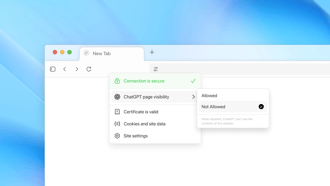When discussing machine learning (ML) systems, the focus is often on model accuracy and large-scale data processing. However, low latency can be just as important—especially for applications that must react to incoming data or user requests in near-real time. In this context, “low latency” means that the end-to-end time from receiving an input to producing a prediction (or decision) is kept under a tightly controlled threshold, often below 100 milliseconds. This definition is especially relevant in fields like algorithmic trading, online recommendation engines, autonomous driving, and real-time monitoring for healthcare.
Traditional MLOps (Machine Learning Operations) practices focus on building robust data pipelines, managing model versions, and maintaining consistent training and production environments. However, once you add the constraint of delivering sub-second or even sub-100ms responses, every part of the pipeline—from data ingestion to model deployment—must be rethought. The following sections examine five critical considerations when designing low-latency MLOps pipelines: infrastructure and serving architecture, model optimization, real-time feature engineering, monitoring/observability, and scalability/high availability. We’ll highlight how these principles differ from more conventional MLOps setups along the way.
Organizations have increasingly recognized that minimizing inference times can significantly influence user engagement and operational outcomes. This shift toward sub-100ms predictions has prompted new paradigms in model optimization, data orchestration, and systems resilience. As a result, low-latency MLOps is rapidly evolving from an optional capability into a strategic necessity for forward-thinking enterprises.

From Batch Jobs to Real-Time Serving
When targeting low latency, a fundamental change is moving from batch-based pipelines to real-time model serving. Predictions might be computed offline or at fixed intervals (like hourly or daily) in a batch scenario. That won’t cut it if an application needs to respond in milliseconds.
- Specialized Inference Servers: Tools such as NVIDIA Triton Inference Server, TensorFlow Serving, or TorchServe are built for low-latency inference. These servers optimize memory usage, batch requests efficiently, and often include GPU/TPU support.
- Microservices & Low-Overhead Protocols: Breaking down your pipeline into microservices allows each component to scale independently. Additionally, protocols like gRPC typically have lower overhead than traditional REST/HTTP, which reduces the time spent in data serialization.
Coordinating State & Concurrency
One key adjustment (based on a recent internal bullet point change) is ensuring stateful coordination across multiple model-serving replicas. Keeping short-lived session data consistent in some scenarios—such as real-time personalization—can be tricky. Teams may use distributed caches or session stores (like Redis or Hazelcast) to synchronize state and features across microservices while still preserving low latency.
Model Optimization & Compression
Balancing Accuracy and Speed
Computational complexity becomes a primary concern when your model must respond in milliseconds. Cutting-edge deep learning models with billions of parameters might deliver exceptional accuracy but risk exceeding your latency budget. Fortunately, there are proven optimization techniques:
- Pruning: Remove less impactful connections in the network to reduce parameter count and inference overhead.
- Quantization: Convert high-precision weights (e.g., 32-bit floats) to lower-precision formats (e.g., 8-bit integers) for faster computation.
- Knowledge Distillation: Train a smaller “student” model to mimic a larger, more accurate “teacher.” This can reduce inference latency dramatically without sacrificing too much accuracy.
Tooling and Automation
Both PyTorch and TensorFlow offer pre-built toolkits:
- PyTorch: Pruning Tutorial and built-in support for dynamic quantization.
- TensorFlow Model Optimization Toolkit: Documentation includes post-training quantization and pruning.
Automating these optimizations in your CI/CD pipeline can help keep model performance consistent over time, ensuring that new versions remain within strict latency bounds.
Real-Time Feature Engineering & Data Pipelines
Streaming Data, Not Static Snapshots
Low-latency MLOps often involves ingesting data in real time—think user clicks, sensor readings, or financial tick data. Instead of batch transformations, your pipeline must quickly cleanse, aggregate, and enrich data on the fly:
- Streaming Frameworks: Apache Kafka, AWS Kinesis, and Apache Flink can handle high-velocity data streams.
- Incremental Updates: Rather than recalculating features daily, update them incrementally. For instance, maintain rolling averages or counters that reflect the latest events.
Ensuring Consistency
A common pitfall is a mismatch between training-time and inference-time features. In a live setting, data drift, or changes in upstream logic can introduce inconsistencies. By versioning feature definitions and using a robust feature store (like Feast or a custom solution), you ensure the same transformations are applied consistently throughout the model’s lifecycle.
Monitoring, Observability & Alerting
High Sensitivity to Spikes
Low-latency systems are more vulnerable to even minor infrastructure or traffic spikes. A small increase in CPU usage or a sudden burst of user requests can degrade performance noticeably. Consequently, you need granular monitoring:
- Latency Percentiles (p95, p99): Understanding tail latencies (not just averages) helps you detect outliers.
- Distributed Tracing: Tools like Jaeger or Zipkin can pinpoint which microservice is causing slowdowns.
- Real-Time Dashboards & Alerts: Visualizations in Grafana or Datadog let you set thresholds that trigger alerts if latencies creep above your maximum targets.
Model Performance Checks
Beyond infrastructure metrics, it’s crucial to monitor model drift and prediction quality. A real-time system might be exposed to rapidly changing data distributions, and the model could gradually become stale. Incorporating automated checks—such as evaluating model performance on a small, continuously updated validation set—ensures you catch performance degradation before it affects end users.
Scalability & High Availability
Handling Traffic Surges
Many real-time applications experience unpredictable or seasonal spikes in traffic. E-commerce platforms see holiday surges; media sites see spikes during events. To maintain strict latency targets, you must plan for sudden load:
- Autoscaling: Use metrics like CPU/GPU utilization or custom inference queue length to scale up quickly.
- Caching: While caching can’t help with truly unique real-time requests (e.g., custom user data), it can offload common queries or intermediate results.
Redundancy & Failover
Keeping latency low also means minimizing downtime. A single zone failure could disrupt your pipeline if you don’t have a fallback. High availability designs often replicate services across multiple regions or availability zones, ensuring that if one region goes offline, another can handle the load seamlessly. This approach can also help reduce latency by routing users to the nearest available data center.
Low Latency in the Real World
By focusing on infrastructure, model efficiency, real-time data, observability, and scalability, you can establish an MLOps pipeline that consistently delivers predictions within tight time constraints. Coupled with high-quality data from a trusted partner like CloudFactory, your organization will be ready to tackle any low-latency challenge that emerges in the fast-paced world of real-time machine learning.
How CloudFactory Can Help
Achieving low-latency MLOps is a multifaceted challenge that demands careful engineering across data ingestion, model serving, monitoring, and scaling. However, high-quality training data remains the bedrock of any successful ML pipeline—real-time or otherwise. That’s where CloudFactory can be a game-changer:
- High-Quality Data Labeling: Our skilled and trained workforce delivers precise annotations, even for complex use cases, ensuring your models get the accurate ground truth they need to perform at top speed.
- Scalable Workforce: Easily ramp up or down as your data needs fluctuate, maintaining throughput without compromising quality.
- Human-in-the-Loop: While automation is critical for low-latency inference, some steps still benefit from human review. CloudFactory seamlessly integrates human verification for edge cases or new data distributions, helping to keep your models fresh and accurate.
Maintaining low latency under real-world conditions is demanding. Don’t let data bottlenecks or subpar labeling practices keep you from meeting strict performance guarantees. Contact CloudFactory today to learn how our data experts and flexible workforce can help optimize your ML workflows—so you can focus on building the real-time applications your users expect.
.png?width=1563&height=1563&name=Untitled%20design%20(38).png)




.png?width=1563&height=1563&name=Untitled%20design%20(30).png)



.png?width=1563&height=1563&name=Untitled%20design%20(33).png)


.png?width=1563&height=1563&name=Untitled%20design%20(34).png)














